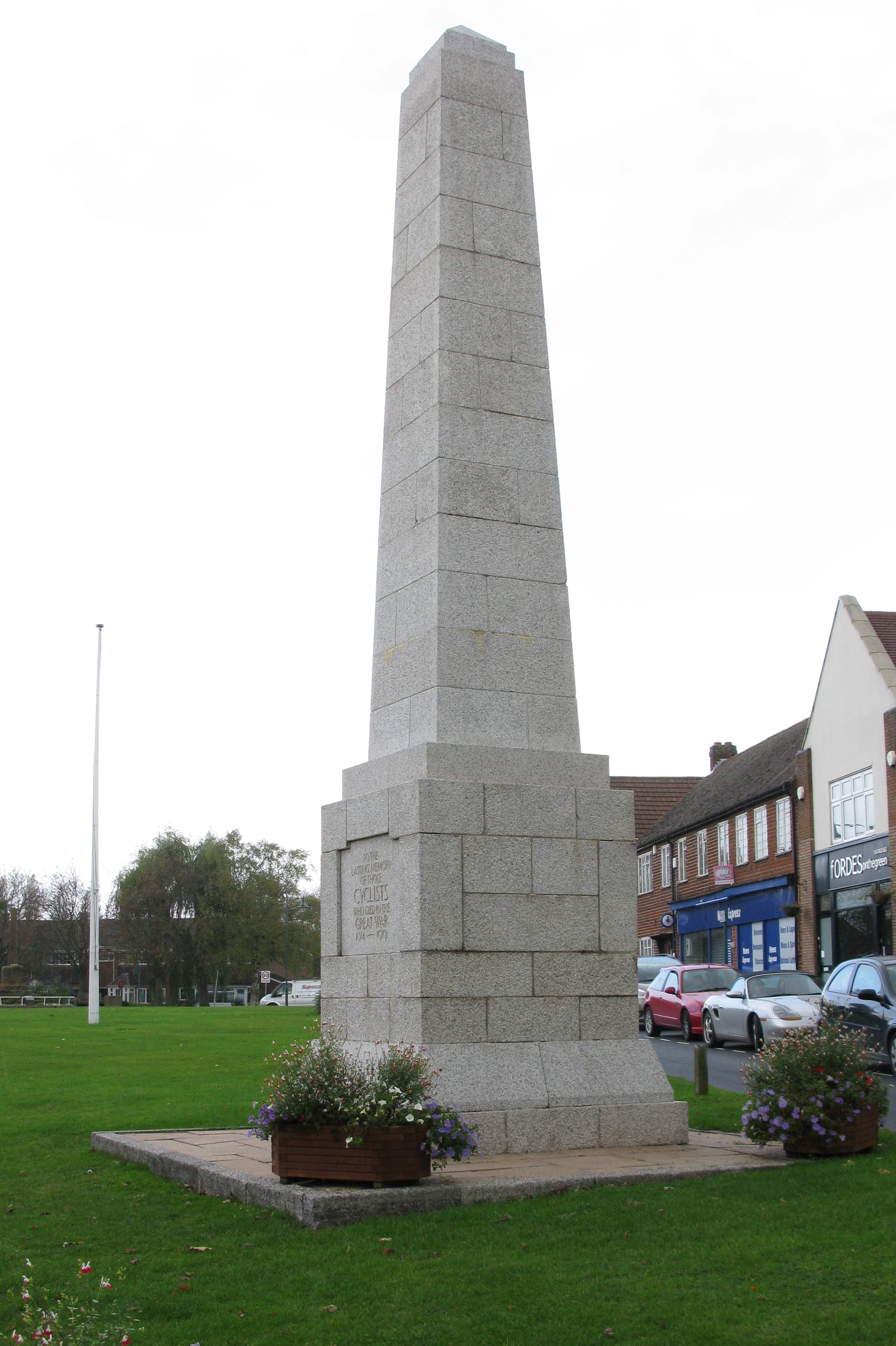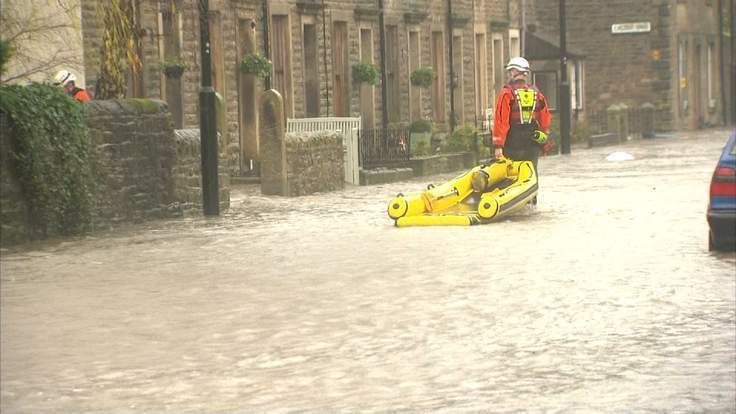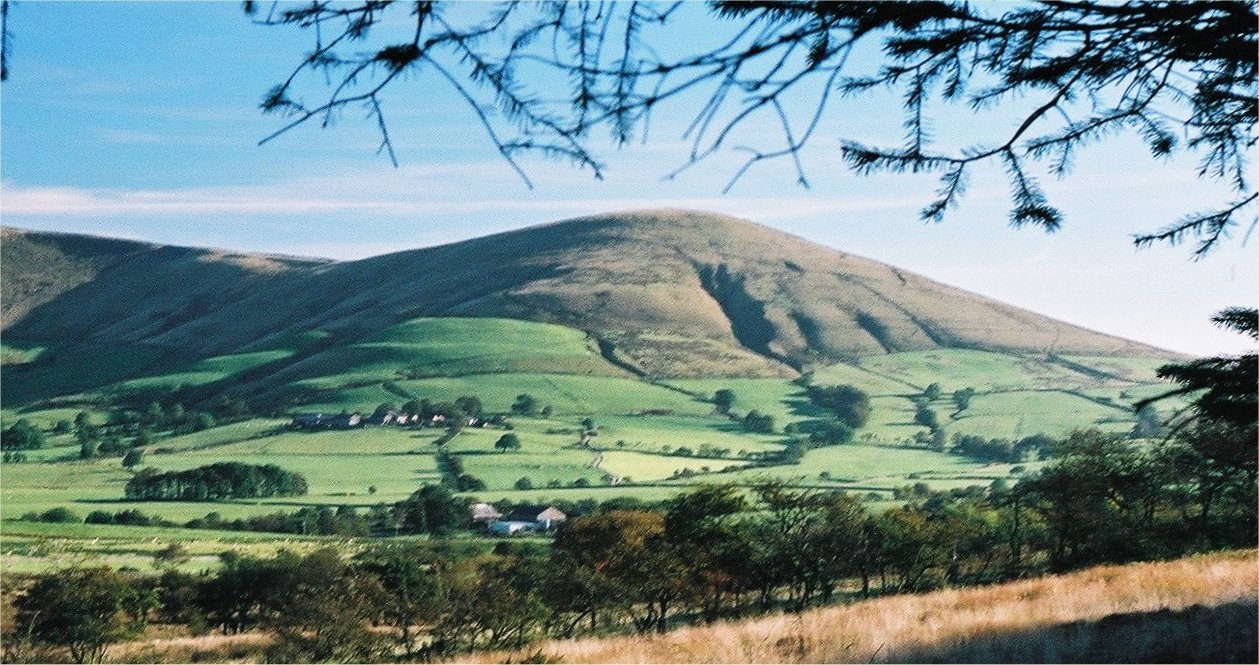|
Centre Points Of The United Kingdom
There has long been debate over the exact location of the geographical centre of the United Kingdom, and its constituent countries, due to the complexity and method of the calculation, such as whether to include offshore islands, and the fact that erosion will cause the position to change over time. There are two main methods of calculating this "centre": either as the centroid of the two-dimensional shape made by the country (projected to the Airy ellipsoid then flattened using the Transverse Mercator projection), or as the point farthest from the boundary of the country (either the sea, or, in the case of constituent countries, a land border). These two methods give quite different answers. Traditional locations The town of Haltwhistle in Northumberland has banners stating that it is the "Centre of Britain". By another calculation the centre can also be said to be Dunsop Bridge, Lancashire, 71 miles (114 km) to the south. However, in 2002 the Ordnance Survey conducted stud ... [...More Info...] [...Related Items...] OR: [Wikipedia] [Google] [Baidu] |
Lindley Hall Farm
Lindley Hall Farm is a farm in Leicestershire, England, in close proximity to Fenny Drayton and Higham on the Hill. The farm is owned by Stephen Farmer. It has been best known as the geographical centre of England since the Ordnance Survey's investigation in 2002. A plaque has been erected by the Ordnance Survey denoting the geographical central point and disputing the historically believed idea that Meriden was the geographical centre. History It is unknown when the farm was established, but it was named after the nearby former Lindley Hall, which was once present on the Leicestershire countryside near Higham on the Hill. Five years following the death of the Lindley Hall estate's owner (Lieutenant Commander Francis Eyre RN), Lindley Hall and the Roman Catholic chapel beside it were ultimately demolished, being one of the country houses and estates in the Nuneaton area to fall victim to redevelopment. However, the remains of the old chapel and hall remain at Lindley House ... [...More Info...] [...Related Items...] OR: [Wikipedia] [Google] [Baidu] |
Meriden, West Midlands
Meriden is a village and civil parishes in England, civil parish in the Metropolitan Borough of Solihull, West Midlands (county), West Midlands, England. Historic counties of England, Historically, it is part of Warwickshire and lies between the cities of Birmingham and Coventry. It is located close to the Warwickshire border within a green belt of the countryside known as the Meriden Gap and is in the Parish, ecclesiastical parish of the Diocese of Coventry. The village is east-northeast of Solihull, west-northwest of Coventry and east-southeast of Birmingham Airport. Birmingham city centre is east-northeast of the village. Known as "Alspath" in the Domesday Book, it was historically thought to be the geographical centre of England until the early 2000s, though after an analysis by the Ordnance Survey this was proved to be incorrect. The village gives its name to the Meriden (UK Parliament constituency), Meriden parliamentary constituency, which was created in 1955 and covers ... [...More Info...] [...Related Items...] OR: [Wikipedia] [Google] [Baidu] |
Higham On The Hill
Higham on the Hill is a village and civil parish in the Hinckley and Bosworth district of Leicestershire, England.OS Explorer Map 232 : Nuneaton & Tamworth: (1:25 000) : The population at the 2011 census was 840. The village's name means 'homestead/village which is high'. Geography The village is about three miles away from both Hinckley and Nuneaton. The parish (and the boundary between the East and West Midlands) is bounded by Warwickshire and the A5 to the south-west. The parish includes the deserted village of Lindley that was mentioned in the Domesday Book and gave its name to RAF Lindley the site of which was acquired by the automotive research institute MIRA Ltd for its proving ground opened on 22 May 1954. The Ashby Canal passes through the east of the parish, and the parish boundary runs along it near Stoke Golding. The Ashby and Nuneaton Joint Railway used to pass through the parish, with its own dedicated railway station, which has since been demolished, ... [...More Info...] [...Related Items...] OR: [Wikipedia] [Google] [Baidu] |
Fenny Drayton
Fenny Drayton (once Drayton-in-the-Clay) is a village and former civil parish, now in the parish of Witherley, in the Hinckley and Bosworth district of Leicestershire, England. OS Explorer Map 232: Nuneaton & Tamworth: (1:25 000): It lies near the Warwickshire boundary, three miles north-east of Atherstone in the Coventry postcode area, just off the A444, the Roman Watling Street. Another Roman road crosses at the end of the scenic Fenn Lanes. The village is four miles from Stoke Golding, where Henry VII of England was crowned after the Battle of Bosworth in 1485. The reinterment of Richard III of England on 21 March 2015 started along Fenn Lanes, near the village. In 1931 the parish had a population of 125. On 1 April 1935 the parish was abolished and merged with Witherley, parts also went to Hartshill, Mancetter and Caldecote. The name means "farm/settlement for portage" or "farm/settlement used as a dragging place". "Fenny" reflects the fen-like ground along the Roman ro ... [...More Info...] [...Related Items...] OR: [Wikipedia] [Google] [Baidu] |
Leicestershire
Leicestershire ( ; postal abbreviation Leics.) is a ceremonial and non-metropolitan county in the East Midlands, England. The county borders Nottinghamshire to the north, Lincolnshire to the north-east, Rutland to the east, Northamptonshire to the south-east, Warwickshire to the south-west, Staffordshire to the west, and Derbyshire to the north-west. The border with most of Warwickshire is Watling Street, the modern A5 road. Leicestershire takes its name from the city of Leicester located at its centre and administered separately from the rest of the county. The ceremonial county – the non-metropolitan county plus the city of Leicester – has a total population of just over 1 million (2016 estimate), more than half of which lives in the Leicester Urban Area. History Leicestershire was recorded in the Domesday Book in four wapentakes: Guthlaxton, Framland, Goscote, and Gartree. These later became hundreds, with the division of Goscote into West Goscote and Ea ... [...More Info...] [...Related Items...] OR: [Wikipedia] [Google] [Baidu] |
Whalley, Lancashire
Whalley is a large village and civil parish in the Ribble Valley on the banks of the River Calder in Lancashire, England. It is overlooked by Whalley Nab, a large wooded hill over the river from the village. The population of the civil parish was 2,645 at the census of 2001, and increased to 3,629 at the census of 2011. The main road through Whalley is King Street, which leads through to Clitheroe Road. Neighbouring Whalley are the small villages of Wiswell, Billington, Barrow, and Read. Close by is Downham village and Pendle Hill which was made famous in William Harrison Ainsworth's book '' The Lancashire Witches''. History Portfield Hillfort also known as Planes Wood Camp, thought to date from late Bronze Age or Iron Age, is located on a slight promontory overlooking the valley of the River Calder southeast of the town. It is one of over 140 Scheduled monuments in Lancashire. Flooding Whalley was severely affected by flooding in December 2015. Hundreds of homes ... [...More Info...] [...Related Items...] OR: [Wikipedia] [Google] [Baidu] |
Forest Of Bowland
The Forest of Bowland, also known as the Bowland Fells and formerly the Chase of Bowland, is an area of gritstone fells, deep valleys and peat moorland, mostly in north-east Lancashire, England, with a small part in North Yorkshire (however roughly half of the area falls into the area of the historic West Riding of Yorkshire). It is a western outlier of the Pennines. The Forest of Bowland was designated an Area of Outstanding Natural Beauty (AONB) in 1964. The AONB also includes a detached part known as the Forest of Pendle separated from the main part by the Ribble Valley, and anciently a royal forest with its own separate history. One of the best-known features of the area is Pendle Hill, which lies in Pendle Forest. There are more than 500 listed buildings and 18 scheduled monuments within the AONB. The Trough of Bowland is a pass connecting the valley of the Marshaw Wyre with that of Langden Brook, and dividing the upland core of Bowland into two main blocks ... [...More Info...] [...Related Items...] OR: [Wikipedia] [Google] [Baidu] |
Morecambe
Morecambe ( ) is a seaside town and civil parish in the City of Lancaster district in Lancashire, England. It is in Morecambe Bay on the Irish Sea. Name The first use of the name was by John Whitaker in his ''History of Manchester'' (1771), when he refers to the "æstury of Moricambe". It next appears four years later in ''Antiquities of Furness'', where the bay is described as "the Bay of Morecambe". That name is derived from the Roman name ''Moriancabris Æsturis'' shown on maps prepared for them by ''Claudius Ptolemœus'' (Ptolemy) from his original Greek maps. At this distance in time it is impossible to say if the name was originally derived from an earlier language (e.g. Celtic language) or from Greek. The Latin version describes the fourth inlet north from Wales on the west coast of England as Moriancabris Æsturis. Translated, this gives a more accurate description than the present name of Morecambe Bay as the Latin refers to multiple estuaries on a curved sea, not ... [...More Info...] [...Related Items...] OR: [Wikipedia] [Google] [Baidu] |
Lichfield
Lichfield () is a cathedral city and civil parish in Staffordshire, England. Lichfield is situated roughly south-east of the county town of Stafford, south-east of Rugeley, north-east of Walsall, north-west of Tamworth and south-west of Burton Upon Trent. At the time of the 2011 Census, the population was estimated at 32,219 and the wider Lichfield District at 100,700. Notable for its three-spired medieval cathedral, Lichfield was the birthplace of Samuel Johnson, the writer of the first authoritative '' Dictionary of the English Language''. The city's recorded history began when Chad of Mercia arrived to establish his Bishopric in 669 AD and the settlement grew as the ecclesiastical centre of Mercia. In 2009, the Staffordshire Hoard, the largest hoard of Anglo-Saxon gold and silver metalwork, was found south-west of Lichfield. The development of the city was consolidated in the 12th century under Roger de Clinton, who fortified the Cathedral Close and a ... [...More Info...] [...Related Items...] OR: [Wikipedia] [Google] [Baidu] |
Blair Atholl
Blair Atholl (from the Scottish Gaelic: ''Blàr Athall'', originally ''Blàr Ath Fhodla'') is a village in Perthshire, Scotland, built about the confluence of the Rivers Tilt and Garry in one of the few areas of flat land in the midst of the Grampian Mountains. The Gaelic place-name Blair, from ''blàr'', 'field, plain', refers to this location. Atholl, which means 'new Ireland', from the archaic ''Ath Fhodla'' is the name of the surrounding district. On 13 March 2008, it was announced that Blair Atholl (together with some other Highland Perthshire villages) would be included in the Cairngorms National Park. This change was made at the request of the people of the town. The Forest of Atholl already formed part of the Cairngorms. Blair Castle Blair Atholl's most famous feature is Blair Castle (NN 865 662), one of Scotland's premier stately homes, and the last castle in the British Isles to be besieged, in 1746 during the last Jacobite rising. The Castle was the traditional ... [...More Info...] [...Related Items...] OR: [Wikipedia] [Google] [Baidu] |
Coton In The Elms
Coton in the Elms is a village and parish in the English county of Derbyshire. At from the coast, it is the one of the furthest places in the United Kingdom from coastal waters. The population of the civil parish as of the 2011 census was 896. It is located southwest of Swadlincote and south of Burton upon Trent. Church Flatts Farm, defined by the Ordnance Survey as the farthest point from the sea in Great Britain, is less than a mile southeast of the village. History Coton is mentioned over a thousand years ago when land was transferred to Wulfrige the Black in AD 942. It is also on the salt route known as Walton Way, which starts in nearby Walton-on-Trent. Coton in the Elms is mentioned in the Domesday book where it is then spelt ''Cotes''. The book says under the title of “The lands of the Abbey of Burton":The Abbey of Burton held a considerable number of manors including several in Derbyshire given to it by the King. These included Coton in the Elms, Stapenhill, Cal ... [...More Info...] [...Related Items...] OR: [Wikipedia] [Google] [Baidu] |







